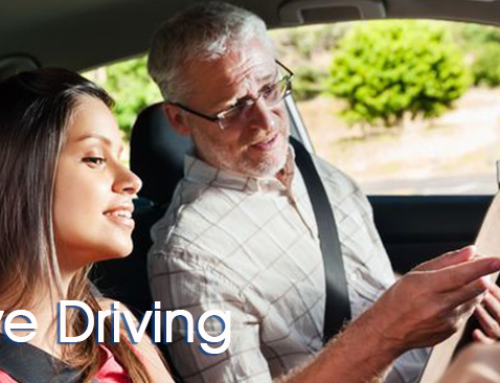In the United States, Memorial Day weekend marks the unofficial start of summer. From then until after Labor Day, millions of Americans will hop in their cars and hit the road. They’ll be traveling to visit family, to attend holiday parties, to go to weddings, to enjoy a day at the beach, or to go camping or hiking or boating. Thousands of these vacationers, however, will also end up in a vehicular accident on one of our roadways this summer. Some will even receive a DUI and have to attend DUI School
July and August are two of the deadliest months, according to data from the National Highway Traffic Safety Administration (NHTSA), with more car crashes and vehicular-related deaths and injuries than any other months. But why is summer driving so dangerous?
There’s no easy answer to this question. For one, summertime roads are more congested. All those vacationers have to get to their destinations and most of them will drive. The nice weather also means more bicyclists and pedestrians will be sharing the roads with cars. More people on the roads equates to more chances for something to go wrong. That’s just simple math.
July and August are, perhaps unsurprisingly, the deadliest months for young teenage drivers. More teenagers are also behind the wheel during their summer breaks. And teenagers are, typically speaking, far less experienced drivers than their adult counterparts. The youngest of them are also part of Generation Z — whose attachment to their smartphones is nearly unanimous and almost unconscious. Adults are increasingly just as guilty of checking Facebook messages in a moving motor vehicle, so that equates to a lot more distracted drivers on the road during the summer months. Marry that with more bicycles and pedestrians and you have a formula for disaster.
In fact, the numbers of car crashes has been steadily rising for car crashes since the 1970s. The fact that the use of handheld technological devices has also increased during the past decade may just be correlation — and not causation — but I doubt the connection is completely random. The slow rise car accidents is likely to be directly related to an increase in distracted driving. The CDC estimates that 8 people will be killed every day due to distracted driving; over 1000 more will be injured. Those numbers add up.
Lowering Your Risk
Is there anything we can do to lower the risk for ourselves? Yes and no. We can’t always protect ourselves from other drivers, but what we can do is try to make the roads a little safer by being more mindful drivers ourselves. Some tips include:
• Forego sending texts or checking messages when you’re behind the wheel, for starters. Talk to your teenagers about the risks of distracted driving and DUI.
• Make sure to wear safety belts (a high number of car crash fatalities are still related to a lack of seat belt use).
• Be more careful if you’re driving on weekends or in the early evening on most days. Data from NHSTA suggests that Saturdays are the deadliest day of the week and the hour between 6pm – 7pm has more crashes than any other time of day.
• If it’s raining, slow down and watch out for hydroplaning. We’re all hyper vigilant in the winter months about snow and ice, but wet roads can be equally dangerous. Just because it’s warm out, doesn’t mean that the roads are always “safe.”
• Get your car checked out before a big trip and check your tire pressure. Blowout are more likely in hotter weather.
Should you need more information on this topic, please contact Safety First of GA today!
Have a happy and safe summer!



